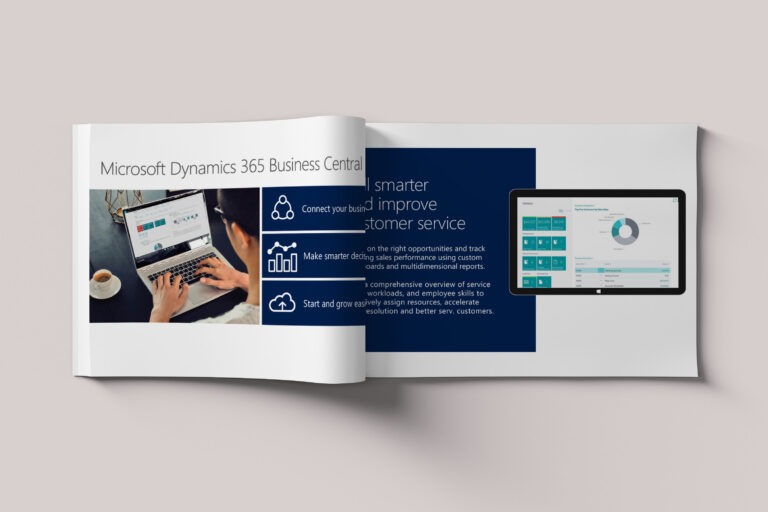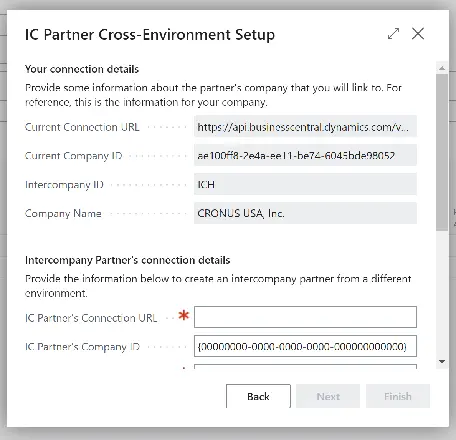Managing Intercompany Transactions
Businesses with more than one legal entity with separate accounting functions can benefit from intercompany transactions. For example, it’s useful for businesses that have subsidiaries in multiple international markets or regions. Or, an organisation might have several companies but lack the equivalent number of accounting and administrative teams. Intercompany transactions simplify and streamline business processes and transactions between companies in the intercompany partnership.
When you’ve specified the customer and vendor relationships for intercompany transactions, partners enter information one time in sales and purchase documents. A corresponding document is created at the other partner involved in the transaction. Mapping the chart of accounts and dimensions helps ensure that information appears in the right places.
There are four main benefits to the intercompany functionality:
- Increased productivity as a result of time saved and simplified transactions
- Minimised mistakes with one-time entry of information and system-wide, automated updates
- Complete audit trail and full visibility into business activities and transaction histories
- Efficient, cost-effective transactions with affiliate and subsidiary companies
Streamline the flow of business activities
Intercompany transactions let you distribute sales and purchasing documents and general journal entries to all of your satellite offices, sales offices or subsidiary companies. Distributing transactions saves time and increases efficiency throughout the organisation by reducing data entry. It cuts down on the need to send, receive, print and archive sales and purchasing documents.
With Business Central, you’re in full control of all transaction documents. For example, you can reject a document sent to you and use the Reverse Journal Postings and Undo Receipts/Shipments actions to make corrections. Or, when making a purchase from a partner or subsidiary company, you can update the purchase order as long as the selling company hasn’t shipped the goods.
When you enter a transaction, you don’t need to specify the accounts to use. You just choose the intercompany partner. The intercompany functionality creates general journal lines that balance the books of both companies involved in the transaction. In receivables and payables, you assign an intercompany partner code to any customer or vendor. From that moment on, all orders and invoices for transactions between these companies produce corresponding documents in the partner company. The result is correctly balanced accounts.
Intercompany focuses on sales and purchase documents and general journal lines and allows transactions between multiple Business Central databases. For example:
- In different countries/regions
- Multiple currencies
- Different charts of accounts
- Different dimensions
- Different item numbers
Intercompany transactions use several types of entries and documents:
- General journal entries
- Purchase and sales orders
- Purchase and sales invoices
- Credit memos
- Return orders
When you set up intercompany transactions, you create a list of intercompany partners, an intercompany chart of accounts and intercompany dimensions. Afterward, you can create transactions in intercompany general journals.
Note: The general journal by itself doesn’t include currencies. It converts all amounts to the local currency at the current exchange rate.
After you set up business partners as customers and vendors, and assign them intercompany partner codes, they can exchange intercompany purchase and sales documents, including items and item charges.
Note: Companies can’t use intercompany to exchange all types of data. Purchase invoices are not submitted to business partners through intercompany processes. However, sales invoices that are submitted through intercompany processes will be created as purchase invoices in the receiving company.
2023 release wave 2 plan’s new intercompany feature: make intercompany transactions across Business Central environments
It’s easier for businesses to handle transactions when they have multiple companies. Intercompany postings help you do accounting for multiple companies operating in multiple Business Central tenant environments, eliminating the need to manage files.
It’s easy to set up an intercompany partnership between companies that operate in different Business Central environments. On the Intercompany Partner Setup page, selecting Connect Externally Setup lets you set up a connection to a company in a different environment. You can select a company that you’re allowed to set up as an intercompany partner in that environment. The setup also involves a step where you create and enable a registration application in Azure Portal in the company that you need to give access to from other companies.
When the setup is complete, you’ll be able to automatically send and receive transactions for the company even though it’s in a different environment.
You can use all intercompany features across environments, including sales and purchase documents, intercompany general journals, and purchase invoice cost distributions. For example, if you’ve chosen to map accounts to an intercompany chart of accounts, or dimensions or items, transactions can flow even though the partners reside in different Business Central environments.





